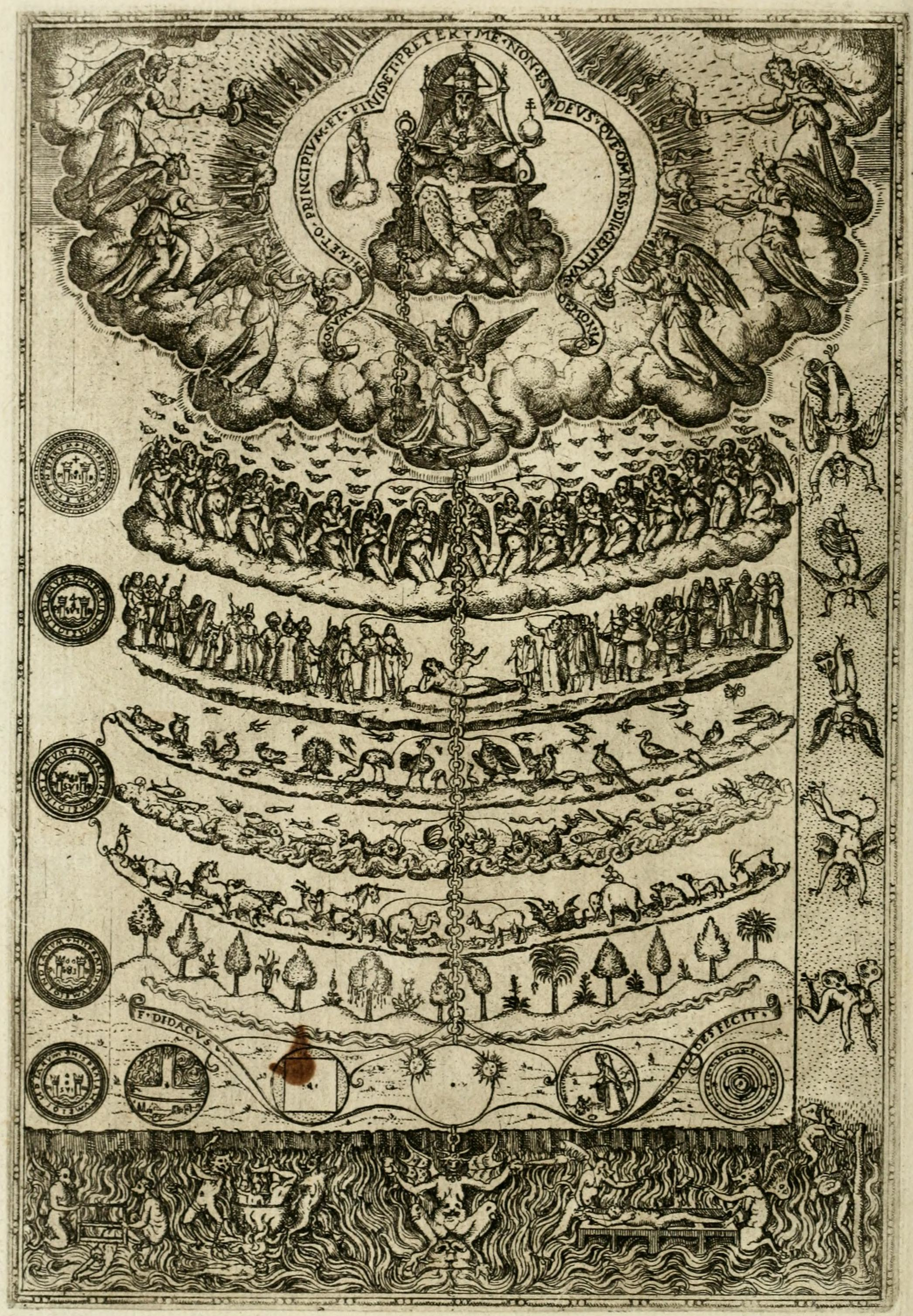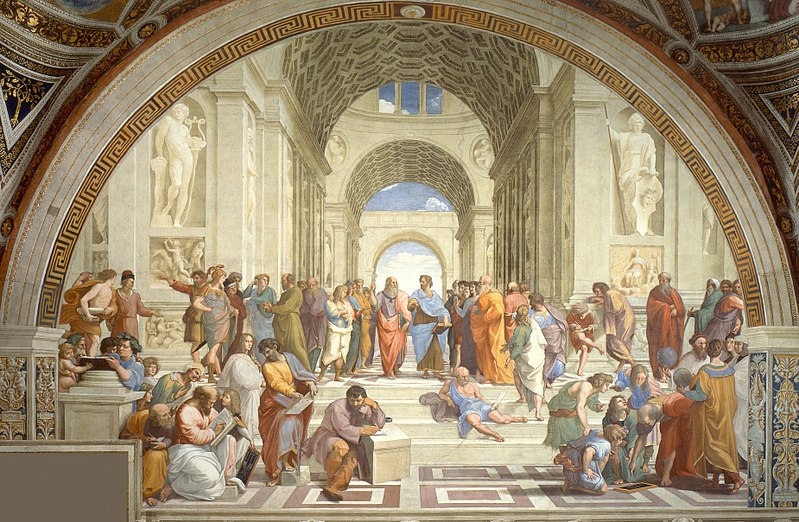5 Chapter 5 THE BODY: Expression and Imagination
Chapter 5
THE BODY:
EXPRESSION AND IMAGINATION
Learning Objectives
Guiding questions: How do the body and emotion help us to define being human? How is love an intrinsic part of both the light and dark side of ourselves?
- Consider examples of how the body is a tool of artistic expression.
- Analyze how love is an intrinsic part of both the light and dark side of ourselves.
- Evaluate presentations of the body, both human and animal, in Renaissance thought and art.
As we consider what it is to be human, certain themes seem to provide us inroads for our investigation. Creativity and the arts, religion and philosophy, perhaps emotion, are themes that allow us to perceive ourselves as thinking and creating beings. But what of the body? How has the physical form of the human body affected our engagement with the world? Throughout time, one additional theme that will contribute to our investigation is the distinguishing between the human species and all else on earth.
Keep these thoughts in mind as we continue through this chapter, from the influence of science on our classification of life to the poetic and literary exploration of being human.
Stop and Think
- What do you think distinguishes humans from other forms of life? Consider that many animal species have sophisticated communication strategies and plants have been proven to have systems of transmitting information.
- What role do you think emotion plays in our exploration of being human? Do you think humans are the only species to experience emotion? Investigate this idea through recent animal research!
- To what degree do you think humans are capable or incapable of understanding other species?
- Is there one thing you consider “purely human”? If so, what is it?
CATEGORIZATION AND CLASSIFICATION:
THE BESTIARY, THE ENCYCLOPEDIA, AND THE NUREMBERG CHRONICLES
One trajectory toward the Modern seen during the Renaissance was the move toward systemic classification of living beings and the rise of the encyclopedia. The Great Chain of Being was the system of classification for the “natural world,” also sometimes called the Ladder of Intellect, a pyramidal structure which placed God (Judeo-Christian) at the pinnacle, followed by angelic beings, humans, animals, plants, and minerals. Some versions even include fire, which incidentally is placed higher than minerals. This “natural order” was seen as fixed, and should one dare to disrupt it, chaos would follow. In fact, Shakespeare’s Macbeth conjures the idea since he has murdered the king and taken the throne. This is tied to other unnatural events unfolding as the play develops. In a political sense, the Great Chain of Being served as a justification for the divine right of monarchs and for the demands of obedience from their subjects. Monarchs, after all, viewed themselves as possessing God-given qualities which made them the fittest among humans to govern.
Additionally, the Great Chain of Being and its hierarchical structure would be culturally deployed to reinforce systems of social oppression, including the role of women, and representations of power. In the image below we see this “Ladder of Intellect” flowing downward from God to angels to human, to animals, to plants and to minerals. Often each of these group designations would be subcategorized further. For example, birds of prey were considered superior to carrion-eaters who were themselves superior to seed-eaters. As we proceed through this chapter, keep in mind the move toward categorization and its eventual influence on our modern scientific thought. This hierarchy serves symbolically as connective tissue between the human mind and the human bodily form.

Image 5.1 Great Chain of Being
While the Ladder of Intellect portrays humans as superior to all other forms of life on earth, the Heavens appeared as an otherworldy realm of the ideal, the perfect. Of note, Galileo Galelei would counter this idea and instead posit that the heavens were imperfect. He support his thesis by viewing them through his first telescope, which he created in 1609. This caused quite an uproar within the Roman Catholic Church, leading to Galileo’s arrest and trial by the Inquisition. For more on that, read the following article (spoiler alert: he repents):
Numerous other examples of systems of classification will flourish prior to and during the Renaissance Era. One such volume was the bestiary, a collection of terrestrial, aquatic, and often imaginary animals. Filled with illustrations (of varying degrees of veracity), these bestiaries straddled the line between a Divine order and the roots of the modern taxonomic system.


Images 5.2 and 5.3 Fantastical images from the Bestiary
To view more examples of creatures in the bestiary and to read about their origins and symbolism,, follow the link below:
Stop and Think
- Did any of the imaginary beasts look familiar to you? Can you identify any similar creatures from sci-fi or fantasy books, graphic novels, movies, or tv shows you know?
- For a more poignant bestiary, consider the following “A Bestiary of Loss” article in the Public Domain Review outlining species that have become extinct. https://publicdomainreview.org/collection/extinct-animals
- Why do you think categorizing was so important? Do you see any manifestations of that today on social media? How do you think categories help us to understand the world?
OTHER CONSIDERATIONS ON BEING HUMAN:
RAPHAEL AND THE SCHOOL OF ATHENS
Artists too would join with scientists, theologians, and philosophers in the investigation of humanness. Below we see the fresco of “The School of Athens” by Raphael (full name: Raphael Sanzio), painted between 1509 and 1511. These frescoes were set in Pope Julius’ library and study with the intention of generating intellectual conversations with visitors in the space. The two central figures, Plato (left) and Aristotle (right), are engaged in vigorous discussion of the origins of knowledge. Plato, with his finger pointing upward, posits that the world is not material but rather a spiritual realm of ideas while Aristotle, with his hand stretched toward the viewer, refers to his belief that knowledge comes from experience. Other well-known ancient philosophers appear in the image as well, providing a genealogy of sorts of Western philosophical thought.

Image 5.4 Raphael, “The School of Athens”
Raphael depicts four major areas of human knowledge: theology, philosophy (including the sciences), poetry and jurisprudence (justice) on the walls of Pope Julius’ study. Though the depiction of philosophy is the most famous, the other presentations are equally instructive. Watch the short video below for a further explanation.
Raphael and The School of Athens
A few yards away in the Sistine Chapel, music was performed for the Pope’s audience. The official name of the Sistine Chapel is the Cappella Musicala Pontificia–the Pontiff is another name for the Pope, and Cappella is the word for Chapel. You may already be familiar with the musical form a cappella, which has its origins in the unaccompanied vocal performances since the construction of the Sistine Chapel. As with the visual elements of “The School of Athens,” the music of the Chapel adds a sensory element to our thoughts of being human. Listen to this penitential piece based on Psalm 51, composed in 1631 by Gregorio Allegri entitled “Miserere” (Have mercy on me, O God…)
LOVE, MURDER, AND IDENTITY IN SHAKESPEARE
Shakespeare’s Macbeth, as mentioned earlier, ties in with our theme of the human body and its place(s) in the world because Macbeth upsets the established social order when he murders the king. At this time many Europeans believed in the “divine right of kings,” that their monarch was ordained by God to rule over the land. In a modern world, we can see how this belief sustained a system of oppression and exploitation, but for centuries ordinary subjects were fearful of disrupting what they believed to be God’s “natural” order.

Image 5.5 John Baldrey, The Banquet
In the image above, note the figures of Macbeth and Lady Macbeth in a moment of tense exchange on the left, and the ghostly figure of Banquo on the right, surrounded by clouds. Below, we will see a modern performance of the same scene. In this scene we will see Macbeth’s reaction to the ghost in two parts: the first, in which he is confused and terrified, the second, in which he confronts the ghost and seemingly makes it disappear. By the end of the scene, we will see Macbeth place his faith in the supernatural and relinquish his attempts to exert control over events. This is a pivotal scene because it is here we realize that Macbeth is doomed to a tragic end. In the following clip, Lady Macbeth demonstrates why as says he has replaced order with disorder:
However, Shakespeare also refers to the human bodily form in a manner of exultation through his sonnets. Below, read the text of Sonnet 18 “Shall I compare thee to a Summer’s day…” in wish Shakespeare uses imagery from the natural world to talk of human beauty. After you have read it, watch it performed in the video below:
Shall I compare thee to a summer’s day?
Thou art more lovely and more temperate:
Rough winds do shake the darling buds of May,
And summer’s lease hath all too short a date;
Sometime too hot the eye of heaven shines,
And often is his gold complexion dimm’d;
And every fair from fair sometime declines,
By chance or nature’s changing course untrimm’d;
But thy eternal summer shall not fade,
Nor lose possession of that fair thou ow’st;
Nor shall death brag thou wander’st in his shade,
When in eternal lines to time thou grow’st:
So long as men can breathe or eyes can see,
So long lives this, and this gives life to thee.
Christopher Marlowe, a contemporary and collaborator of Shakespeare, would offer another literary examination of the meaning of being human in Elizabethan England. For a thorough examination of the life of Marlowe and an introduction to his works, read the following summary from poetryfoundation.org:
Finally, the expression of humanness through sound is recognized in polyphonic compositions and the form of the madrigal. William Byrd (1540-1623) is among the best known composers of the form. Listen to the following performance of “Sing joyfully unto God” here:
Adapted by Monica Krupinski
All chapter images in the Public Domain
“Galileo” https://www.khanacademy.org/humanities/renaissance-reformation/high-ren-florence-rome/beginners-guide-high-ren/a/galileo-galileiAccessed 22 Dec 2022
“Bestiary essay” https://www.khanacademy.org/humanities/renaissance-reformation/high-ren-florence-rome/beginners-guide-high-ren/a/galileo-galileiAccessed 22 Dec 2022
“Raphael and the School of Athens” https://www.khanacademy.org/humanities/renaissance-reformation/high-ren-florence-rome/high-renaissance1/v/raphael-school-of-athensAccessed 22 Dec 2022
“‘Miserere’ Allegri” https://www.youtube.com/watch?v=IX1zicNRLmYAccessed 22 Dec 2022
“Macbeth Banquet Scene” https://www.youtube.com/watch?v=rR7XS9pZoV0Accessed 22 Dec 2022
“Sonnet 18 performed” https://www.youtube.com/watch?v=05waZXoMUcgAccessed 22 Dec 2022
“Christopher Marlowe’s life” https://www.poetryfoundation.org/poets/christopher-marloweAccessed 22 Dec 2022
Byrd, “Sing joyfully unto God” https://www.youtube.com/watch?v=9uK9nVVbGHwAccessed 22 Dec 2022